Sony TA-FE370 No Sound
This Sony TA-FE370 had no sound through the speakers, and the first step was to determine if I was set correctly by ensuring that the "Speakers ON/OFF" switch at the front was ON. In a working amplifier, you should hear a click sound when turning that knob to the ON position. This switch simply controls relay RY601, and in a faulty amplifier, you will not hear the relay click when using this switch.
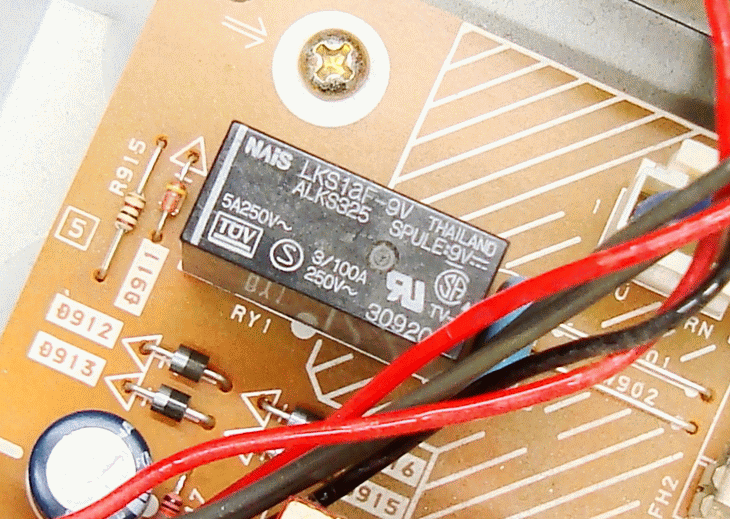
This amplifier has two relays, where RY1 (on the standby power board) controls the power to the main transformer, and RY601 provides speaker protection in case of overload conditions. When you switch ON the amplifier, RY1 is the first to make the "click" sound, and if the STK4221MK2 is OK, then RY601 follows after approximately five seconds with the second "click" sound.
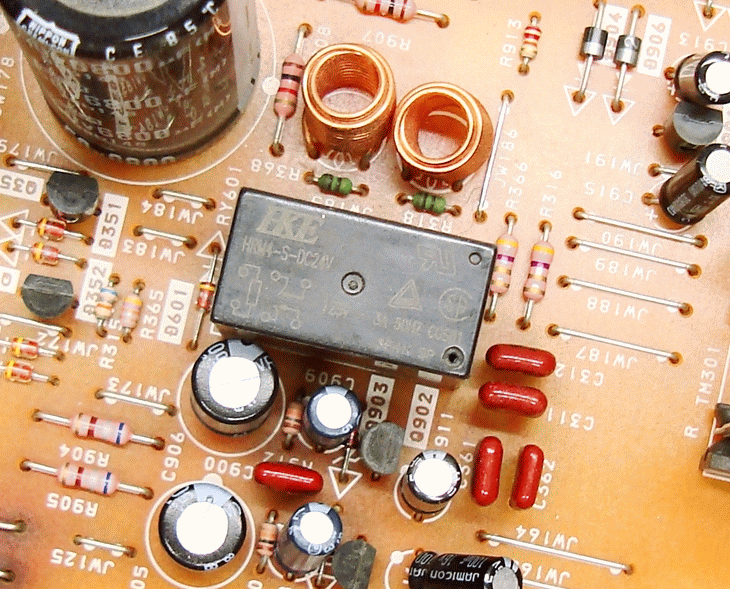
IC601 (µPC1237HA) is a protector IC for power amplifiers manufactured by the NEC Corporation. It controls relay RY601 that connects the output pins 12 and 15 of the STK4211MK2 to the speaker terminals. Pin 1 of IC601 detects overload conditions, pin 2 detects DC, and pin 4 checks for AC presence.
The function of pin 4 is to check for AC presence during which time the relay remains engaged. The relay disengages when the AC is not present. The purpose of this is to eliminate the amplifier switch-OFF noise that usually occurs due to rushing currents. They use the AC line because this is the fastest to react, whilst DC rails tend to have large capacitors that present a delay.
To suppress the amplifiers power ON noise, IC601 automatically starts with the muting ON, and after a slight delay, it switches this function OFF. Pin 7 allows one to control the muting function, which requires around 2.1 V to switch OFF. When we switch ON the amplifier, current through R605 (68 kΩ) charges C603 (47 µF/16 V) until the threshold voltage at pin 7 is sufficient to switch OFF the mute condition which then results in relay RY601 engaging. The RC values determine the delay and that is why there is always a slight delay for the second click when switching ON the amplifier.
I noticed that the voltage on pin 7 was abnormally low. I injected 2.2 V into this pin and heard relay RY601 engaging; therefore, I knew I was on the right trail. R605 and C603 seemed to be operating within tolerance parameters; however, I decided to change them anyway. This resulted in RY601 engaging occasionally but not all the time. I therefore decided to reduce the value of R605 so that the time to charge C603 would be reduced, and eventually found a value of 4.7 kΩ that worked very well. With this modification, RY601 activated every time, and the delay was two to three seconds. The next day when I switched ON the amplifier, the fault had reappeared so I checked the µPC1237HA documentation which indicated that pin 7 can accept a maximum of 8 V DC. Therefore, I lowered the value of R605 to 1 kΩ, which reduces the delay time further, and increases the voltage.
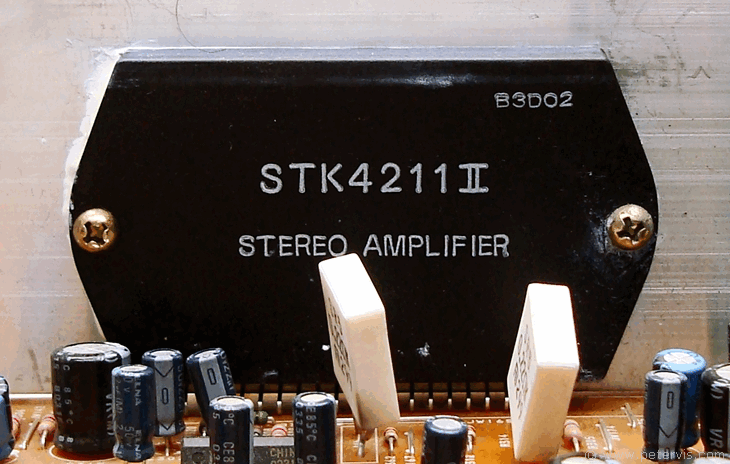
An advantage of experimenting with lower R605 values is that it gets the amplifier working temporarily allowing one to determine if the STK4211MK2 audio amplifier IC is working.
Since the fault appears around the µPC1237HA, and this IC was notorious for failing, I decided to order another one. You could order them directly from China for as little as a pound through eBay.
µPC1237HA
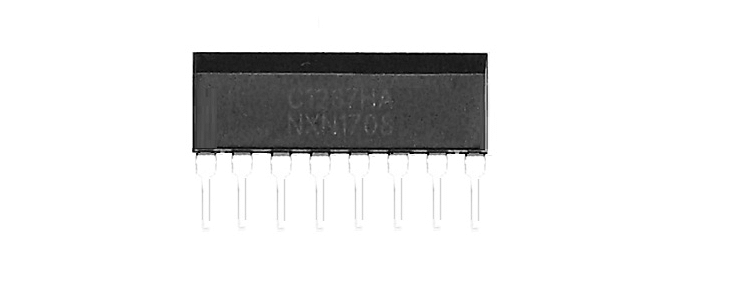
The new µPC1237HA appears to be slightly different in design. The package is much larger compared to the factory-installed one. On the new one, the delay in muting did not appear to work no matter the values of R605 and C603. Eventually, removing C603 from the circuit helped.
Circuit
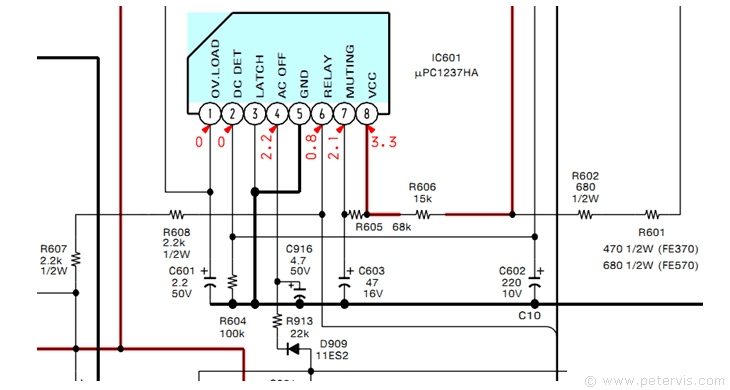
This Article Continues...
Sony TA-FE370Sony TA-FE370 Electronic Engineering
Sony TA-FE370 Amplifier Board
STK4211MK2 Diagnosis
Sony TA-FE370 No Sound
Sony TA-FE370 Resistor Modification
Sony TA-FE370 PCB
Sony TA-FE370 Back Sockets